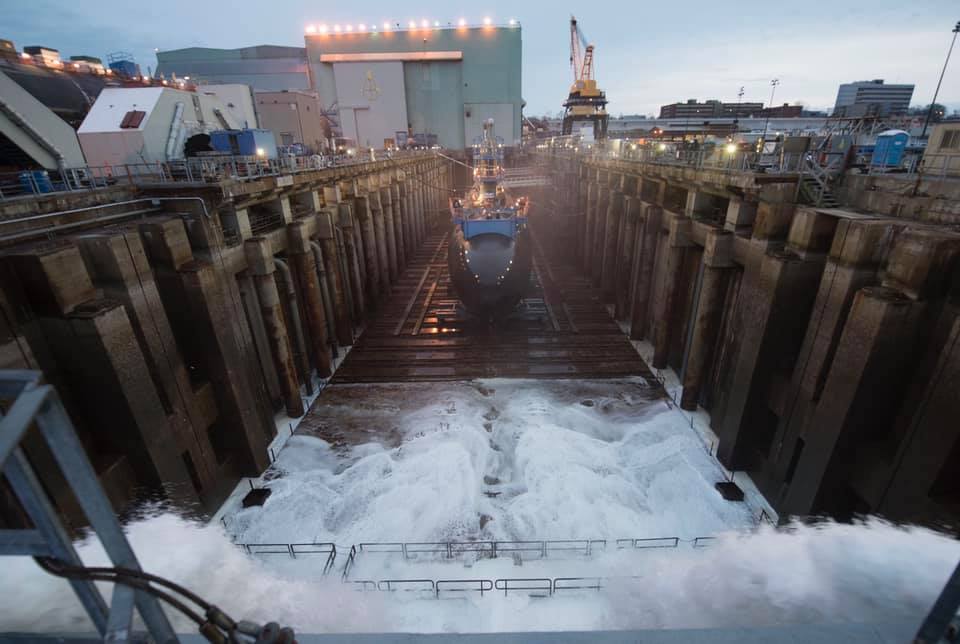
Senate appropriators are worried about the Navy’s budget tactics and are calling upon the Government Accountability Office to conduct a study to address their concerns.
The Senate Appropriations Committee wants the comptroller general, which leads the GAO, to assess the procedures both the Navy and the Pentagon’s Cost Assessment and Program Evaluation (CAPE) use when planning for multi-year procurement contracts and provide a report to lawmakers within three months of the Fiscal Year 2022 defense spending bill becoming law, according to the explanatory statement accompanying a draft of the legislation. The statement language specifically raises concerns over how the Navy has handled its multi-year procurement deals in recent years.
“This report shall include an analysis on treatment of [multi-year procurment] funds for Navy programs in the fiscal year 2021 and fiscal year 2022 President’s budget submissions,” the statement reads.
The language, released this week along with a draft of the FY 2022 defense spending bill, comes after the Navy’s recent budget submission-only asked for one Arleigh Burke-class destroyer instead of the two that are part of the current multi-year procurement contract. Buying only one destroyer would break the contract and the Navy would incur a $33 million penalty.
“The Committee is concerned that this continues a trend by the Navy to submit budgets to the Congress that deliberately underfund programs deemed by the Navy to be critical, with the expectation that the congressional appropriations committees will restore funds for these programs within the budget allocation for the Department of Defense,” the explanatory statement reads.
The panel referred to a similar approach the Navy took in FY 2021, when it only sought one Virginia-class submarine instead of the two that were planned.
Lawmakers also raised concerns over this budget tactic given that the Navy has multiple big-ticket shipbuilding programs and the next-generation fighter on the horizon.
“As a result of these repeated budgetary maneuvers, the Committee questions whether the Navy’s budget requests accurately reflect the service’s most important priorities. This is particularly concerning given the Navy’s plans to initiate and ramp up several major acquisition programs in the near-term, including the COLUMBIA Class submarine, the Next Generation Air Dominance Family of Systems, the DDG(X) Destroyer, FFG, and SSN(X),” the statement continues. “At the same time, the Navy is struggling to manage cost on several major acquisition programs, including the COLUMBIA Class submarine, certain subsea and seabed warfare programs, and the TAO fleet oiler, revealing significant cost increases for each of these programs in the fiscal year 2022 budget submission.”
The Navy in each of the last two budget cycles has cut a planned ship from its request and instead moved the vessel to the top of its unfunded priorities list, or annual wish list. Lawmakers in FY 2021 added the second Virginia-class submarine and congressional defense committees have added a second destroyer in their drafts of the appropriations and authorization bills. Still, Senate appropriators are critical of the Navy’s strategy.
“The Committee is troubled by the Navy’s decision to underfund this shipbuilding program, despite identifying the ship as the Navy’s highest unfunded priority,” according to the explanatory statement, which is referring to the second destroyer.
“The Committee expects the Navy to honor the commitments it has made to our domestic shipbuilding industrial base, and avoid paying unnecessary penalties that increase the cost of shipbuilding programs.”
The panel is also worried about the Navy’s move to cut the destroyer when the Large Surface Combatant program, which will follow the Arleigh Burke-class, has faced delays.
“The Committee remains deeply concerned that the Navy continually reduces the procurement profile for DDG–51 Flight III destroyers despite repeated delays to the Large Surface Combatant program, which undercuts naval maritime superiority and injects unnecessary risk into the industrial base,” the explanatory statement reads. “The Committee believes that the lack of a predictable and stable acquisition strategy for the current large surface combatants is inconsistent with previously stated shipbuilding objectives and will result in a reduction of force-level goals during a period of increasing demand.”

To address this concern, lawmakers are urging the Navy to ink another multi-year procurement contract for the Arleigh Burke-class destroyers starting in FY 2023, with a goal of building three destroyers per year. The panel allotted $120 million in advance procurement funding for the Navy to pursue another multi-year.
Former acting Navy Secretary Thomas Harker in June told Congress that the service was pursuing another multi-year procurement contract for the destroyers that would begin in FY 2023 and end in FY 2027, USNI News reported at the time.
The Senate Appropriations Committee unveiled its draft of the FY 2022 defense spending bill earlier this week. The panel took a similar approach to the House and Senate Armed Services Committees in boosting national defense spending, with Senate appropriators increasing the topline by about $24.7 billion.
The Navy’s shipbuilding request sought two Virginia-class submarines, one Arleigh Burke-class destroyer, one Constellation-class frigate, one John Lewis-class fleet oiler, two Navajo-class towing, salvage and rescue ships, and one T-AGOS(X) ocean surveillance ship.
Senate appropriators allotted funding to meet this request and added funding for four more ships – one destroyer to complete the multi-year procurement, two Expeditionary Fast Transport vessels, and an Expeditionary Sea Base.
The additional funding partially mirrors efforts by the House Armed Services Committee, which authorized funding for the second destroyer and two EPFs. The Senate Armed Services Committee also authorized the second destroyer, but only approved one EPF.
The draft of the Senate Appropriations Committee legislation also allotted an extra $793 million for Marine Corps Commandant Gen. David Berger’s force design work, which is seeking to reshape the Marine Corps as it prepares for a potential conflict in the Indo-Pacific, according to a committee summary of the bill.
The $24.7 billion boost from Senate appropriators brings the national defense spending topline to approximately $778 billion, with about $739 billion going to the Defense Department. The $739 billion includes both defense appropriations and a separate bill with $13.7 billion for military construction.
While Senate appropriators’ topline increase followed moves by both House and Senate authorizers, the House Appropriations Committee adhered to the Biden administration’s topline number. The Biden administration’s FY 2022 request sought approximately $753 billion for national defense spending, with about $715 billion going to the Pentagon.
Meanwhile, Senate Appropriations Committee vice chairman Sen. Richard Shelby (R-Ala.) criticized Democrats for releasing the series of funding bills this week.
“Chairman Leahy’s decision to unilaterally unveil partisan spending bills is a significant step in the wrong direction. This one-sided process has resulted in bills that spend in excess of the Democrats’ own budget resolution and fail to give equal consideration to our nation’s defense,” Shelby said in a statement earlier this week. “Their bills are filled with poison pills and problematic authorizing provisions, and they remove important legacy riders on topics like terrorism, abortion, and immigration that for years have enjoyed broad support on both sides of the aisle.”
Lawmakers have until Dec. 3 to pass the appropriations bills. If Congress doesn’t pass the spending bills by then, lawmakers would need to pass another continuing resolution to keep the government-funded.





